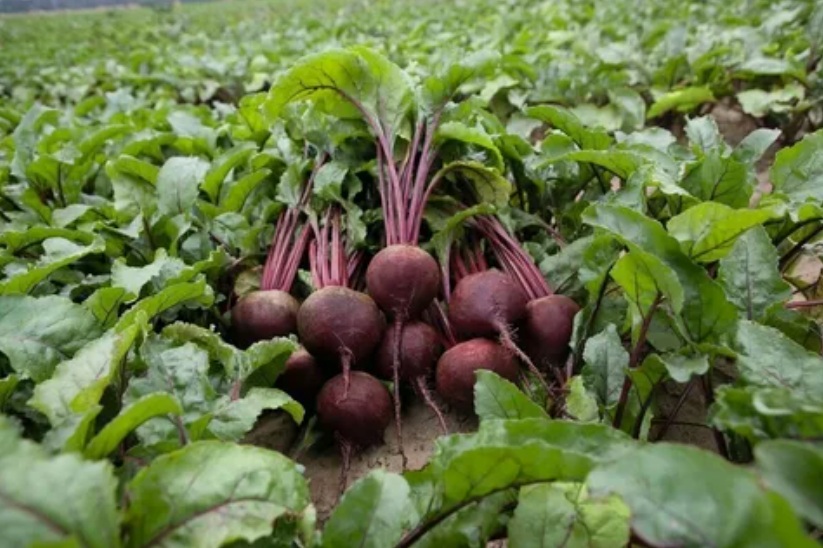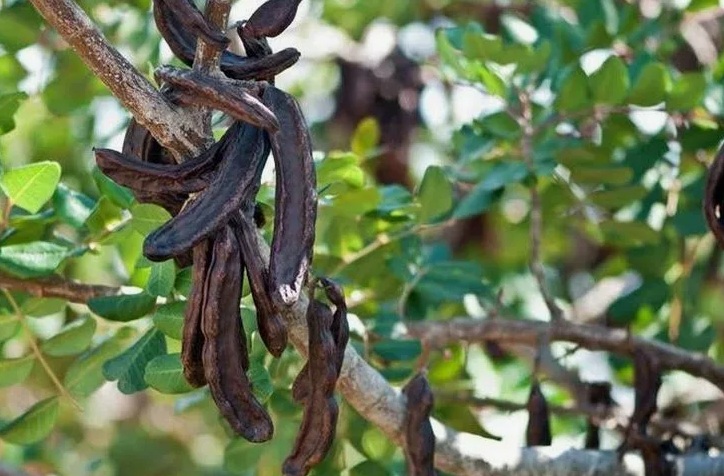What Is Dill and Where Does It Grow?
Dill, scientifically known as Anethum graveolens, is a versatile herb widely used in cooking and traditional medicine. This aromatic herb is characterized by its feathery green leaves and distinctive fresh, slightly tangy flavor. Dill is part of the celery family (Apiaceae) and has been cultivated for thousands of years, dating back to ancient Egyptian times, where it was revered for its culinary and therapeutic properties.
Dill is commonly grown in regions with a temperate climate, particularly in Europe, Asia, and North America. It thrives in well-drained soil, receiving ample sunlight, and can even be grown in small home gardens or balcony pots. From the lush fields of India and Mediterranean regions to backyard herb gardens around the world, dill has become a household favorite for those who enjoy adding an extra layer of flavor to their dishes.
What Are the Benefits of Dill?
Dill is not just a tasty addition to your meals; it is a powerhouse of health benefits. Rich in essential vitamins and minerals, dill contains vitamin C, vitamin A, iron, magnesium, and manganese, along with antioxidants like flavonoids. These nutrients work together to support a healthy immune system, enhance bone health, and improve digestion.
Here are some of the key benefits:
*Boosts Digestion: Dill’s essential oils stimulate the secretion of bile and digestive juices, alleviating bloating, indigestion, and flatulence.
*Anti-inflammatory Properties: Compounds in dill, such as monoterpenes, can help manage inflammation, contributing to relief from arthritis and other inflammatory conditions.
*Rich in Antioxidants: Dill’s flavonoids and other antioxidants help neutralize harmful free radicals, reducing oxidative stress and promoting overall health.
*Supports Heart Health: The herb has been known to help regulate cholesterol levels and improve cardiovascular function.
*Improves Sleep: Dill contains natural compounds that promote relaxation and calmness, making it a mild, natural remedy for insomnia.
*Supports Bone Health: The calcium and magnesium content in dill contribute to stronger bones and may prevent conditions like osteoporosis.
Where and How Can We Use Dill?
Dill is an incredibly versatile herb that can enhance a variety of dishes. Both dill leaves (also called dill weed) and its seeds are used in cooking and flavoring. Here are some ideas:
Culinary Uses:
In Cooking: Dill is a popular herb in Mediterranean, Scandinavian, and Eastern European cuisines. Use fresh dill leaves to garnish salads, soups, and stews, or as a key ingredient in marinades and dressings.
Pickling: Dill is famously used to flavor pickled vegetables, especially cucumbers (think dill pickles). Its tangy, slightly sweet aroma makes it an essential spice in pickling recipes.
In Sauces and Dips: Dill pairs beautifully with yogurt or sour cream-based sauces, such as tzatziki, and makes a mouthwatering addition to dips for chips or vegetables.
With Seafood: Dill is often used to enhance dishes like salmon, trout, and shrimp. Its delicate, tangy flavor complements the richness of seafood.
In Bread and Butters: Add dill seeds to bread doughs or compound butters for added flavor.
How to Use:
Use it fresh for the best flavor, adding it into your dish just before serving to prevent it from losing its aroma.
Dried or powdered dill can also be used in recipes, although the taste is milder.
Dill seeds are ideal for pickling or as a spice in soups, curries, and bread recipes.
What Are Dill’s Health Cures?
For centuries, dill has been used as a natural remedy for a variety of ailments, thanks to its antimicrobial, anti-inflammatory, and soothing properties. Some of its notable health cures include:
Soothes Digestive Distress: Dill seed tea has long been used as a natural remedy to treat digestive issues, such as stomach cramps, nausea, and acid reflux.
Remedies for Colic in Babies: Dill water has been traditionally used to relieve colic and digestive discomfort in infants, making it a go-to choice for parents.
Eases Menstrual Discomfort: Dill’s essential oils are believed to ease menstrual cramps and regulate cycles.
Cures Bad Breath: Chewing on fresh dill leaves or seeds can help freshen breath by combating bacteria in the mouth.
Reduces Blood Sugar Levels: Emerging research indicates that dill may help regulate blood sugar levels, potentially benefitting those with diabetes.
Fights Infections: Dill has antibacterial and antimicrobial properties that help in fighting infections and enhancing immunity.
Beyond Pickles: Unleashing the Versatile Power of Dill in Your Kitchen and For Your Health

Dill, with its feathery green fronds and distinctive, slightly anise-like flavor, is often relegated to the pickle jar. But this humble herb is so much more than a pickling agent! Dill elevates countless dishes, offers a wealth of health benefits, and can even be a soothing ally during cold and flu season. Let’s dive into the delicious and practical uses of dill.
Dill in the Kitchen: A Culinary Chameleon
Dill’s bright, fresh flavor profile makes it incredibly versatile, pairing beautifully with a wide range of ingredients. Here are some practical and delightful ways to incorporate dill into your cooking:
Seafood Sensations: Dill is a natural partner for seafood. Sprinkle it over grilled salmon, toss it into a creamy shrimp pasta, or use it to flavor a delicate white fish like cod or haddock. Dill sauce, often made with yogurt or sour cream and lemon juice, is a classic accompaniment to fish.
Vegetable Virtuoso: Don’t underestimate dill’s power to enhance vegetables. Add it to potato salad for a refreshing twist, sprinkle it over roasted carrots or asparagus, or use it to flavor a creamy cucumber salad. Dill’s brightness cuts through the richness of heavier vegetables like squash and eggplant.
Dairy Delights: Dill loves dairy! Stir it into cream cheese for bagels, add it to a homemade ranch dressing, or mix it into sour cream for a flavorful dip. Dill also elevates cheese boards, providing a refreshing counterpoint to richer cheeses.
Egg-cellent Additions: Dill transforms ordinary egg dishes. Add it to scrambled eggs, frittatas, or omelets for a burst of fresh flavor. Dill is also a wonderful addition to deviled eggs.
Soup Star: A sprinkle of fresh dill can brighten up almost any soup. It’s particularly delicious in creamy soups like potato leek or asparagus, as well as in light broths like chicken noodle.
Beyond the Obvious: Experiment with dill in unexpected places! Try adding it to marinades for chicken or pork, using it to flavor homemade bread, or even incorporating it into a refreshing summer cocktail.
Health Benefits of Dill: More Than Just Flavor
Beyond its culinary appeal, dill offers a surprising range of health benefits:
Nutrient Rich: Dill is packed with vitamins and minerals, including vitamin A, vitamin C, calcium, iron, and manganese. These nutrients contribute to overall health and well-being.
Digestive Aid: Dill has been traditionally used to aid digestion and relieve bloating. It contains compounds that help to reduce gas and soothe the digestive tract.
Antioxidant Powerhouse: Dill is rich in antioxidants, which protect the body against damage from free radicals. These antioxidants may help to reduce the risk of chronic diseases like heart disease and cancer.
Anti-Inflammatory Properties: Some studies suggest that dill has anti-inflammatory properties, which may help to reduce inflammation throughout the body.
Bone Health: Dill is a good source of calcium, which is essential for maintaining strong bones and preventing osteoporosis.
Dill as a Cold and Flu Ally: Soothing Relief
While not a miracle cure, dill can offer some soothing relief during cold and flu season:
Soothing Sore Throat: Drinking dill tea (steep fresh or dried dill in hot water) can help to soothe a sore throat and reduce inflammation.
Easing Congestion: The aromatic compounds in dill can help to clear nasal passages and ease congestion.
Boosting Immunity: Dill’s high vitamin C content can help to boost the immune system and fight off infection.
Calming Properties: Dill has calming properties that can help to reduce stress and anxiety, which can be beneficial when you’re feeling under the weather.
Conclusion
In conclusion, dill is a versatile and valuable herb that deserves a prominent place in your kitchen and your wellness routine. From its ability to transform ordinary dishes into culinary delights to its impressive range of health benefits, dill is a true culinary and medicinal powerhouse. So, next time you’re looking for a way to brighten your dishes or boost your health, reach for the dill! You might be surprised at how much it has to offer.
Dill is more than a flavorful herb—it’s a nutritional and medicinal powerhouse. From its ability to enhance culinary creations to its impressive list of health benefits, dill proves to be a valuable addition to any kitchen. Whether you’re savoring its refreshing taste in your meals or harnessing its healing properties through herbal remedies, dill is a must-have in your pantry. With its rich history and versatility, this humble green herb truly stands out as an invaluable gift from nature.
You can read below writings
The Humble Onion: A Culinary Staple with Remarkable Benefits
What is White Cabbage and Where Does it Grow
What is Coffee and Where Does It Grow
Lemon: The Tangy Wonder – Benefits, Uses, and More
What is Red Cabbage and Where Does It Grow?






